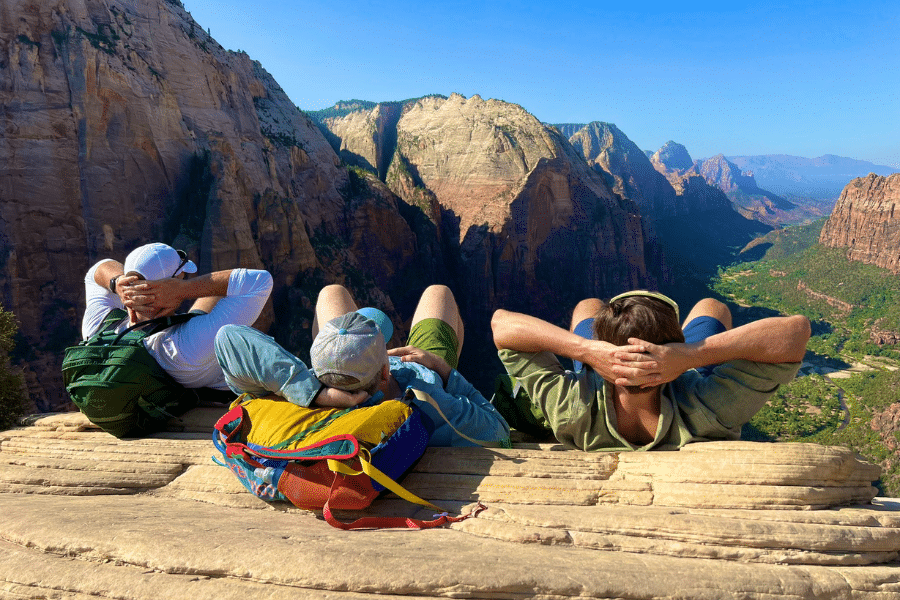You think you’ve seen America just because you’ve walked through Times Square or snapped a selfie at the Grand Canyon? That’s barely scratching the surface. Every state has that one place—sometimes iconic, sometimes completely unexpected, but always worth the detour. Some of these spots will have you wondering how you’ve never heard of them. Get ready, this list might make you rethink that European getaway. And by the end, you’ll realize the real question isn’t how many you’ve seen—it’s how many you never knew you were missing.
New Mexico – White Sands National Park
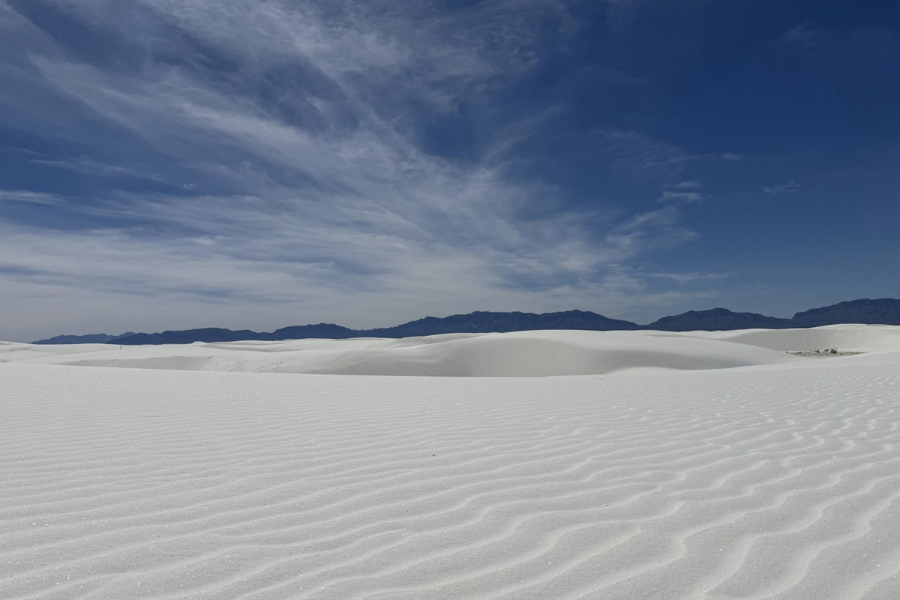
It looks like snow, feels like flour, and glows peach at sunset—White Sands is a surreal sea of gypsum dunes nestled in southern New Mexico’s desert basin.
This 275-square-mile park is the world’s largest gypsum dunefield. National Geographic dubbed it “a place so otherworldly, NASA once tested Mars rovers here.” Bring sunglasses—it’s bright even on cloudy days.
Visit in late October for cool temps and stunning skies. Bring a sled (or buy one at the gift shop) and slide down dune hills like it’s powdered joy.
Minnesota – Mall of America
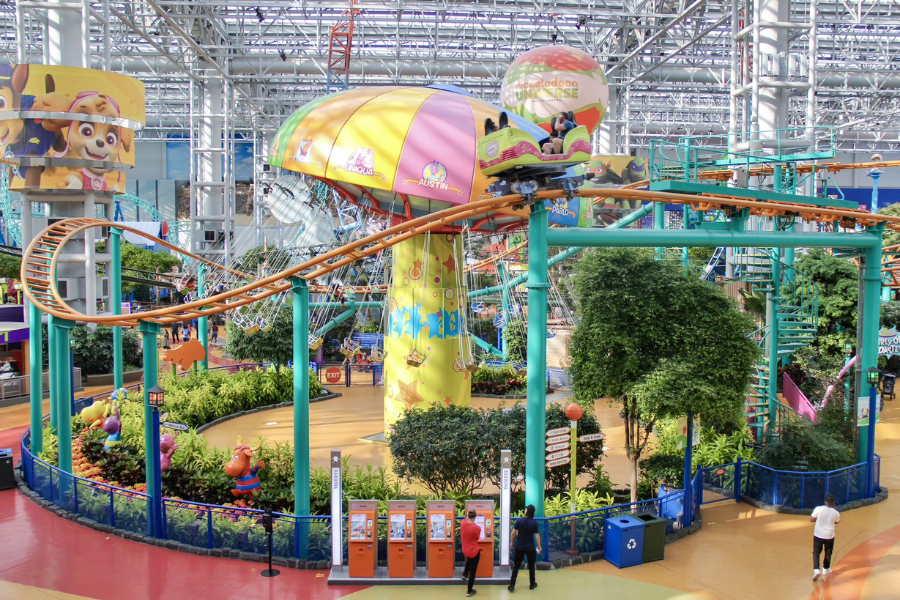
This mall isn’t just big—it’s RIDICULOUSLY BIG. 500+ stores, a theme park, an aquarium, and a chapel. Yes, you can ride a coaster and get married before lunch.
With 40 million annual visitors, it’s more visited than the Grand Canyon. CNN Travel calls it “a retail city-state with zero sales tax on clothes.” Budget accordingly.
Go midweek and bring comfy shoes. Don’t skip the sea turtles under the glass floor at Sea Life, and yes, you can buy socks on the rollercoaster if you forgot yours.
Virginia – Colonial Williamsburg

Reenactors in powdered wigs churn butter, debate politics, and fire muskets on command. It’s not a theme park—it’s a living, breathing time machine with serious colonial flair.
Covering 301 acres, it’s the world’s largest living history museum. “It walks the line between immersive and educational brilliantly,” says Smithsonian Magazine. Kids can even join the militia.
The best month to visit is April if you desire perfect walking weather and spring gardens. Grab a ginger cake from Raleigh Tavern Bakery—it tastes like 1776 with a hint of molasses aroma.
South Dakota – Mount Rushmore

It’s four presidents carved into granite, 60 feet high and unfazed by weather or pigeon droppings. You’ll squint up and immediately hum patriotic music. It’s involuntary.
Built between 1927 and 1941, Mount Rushmore attracts over two million visitors yearly. “It’s massive and strangely quiet,” noted National Geographic. Fun fact: the noses are 20 feet long!
Go here at sunrise or stay for the nightly lighting ceremony—it’s weirdly moving. Walk the Presidential Trail for closer views and better photos. Bring binoculars, not just for birds—Washington’s pupils deserve a zoom-in.
Hawaii – Nā Pali Coast

Razor-sharp cliffs plunge into turquoise waves along Kauai’s Nā Pali Coast. It’s inaccessible by car, making it all the more magical—and slightly harder to Instagram from a parking lot.
You can hike it, boat it, or take a helicopter ride over its emerald ridges. As Conde Nast Traveler put it: “Few landscapes in the world rival its drama.”
Visit in summer for calm seas and clear skies if you’re booking a boat tour. The Kalalau Trail’s permits sell out quickly—reserve early if you’re hiking into paradise.
Michigan – Mackinac Island
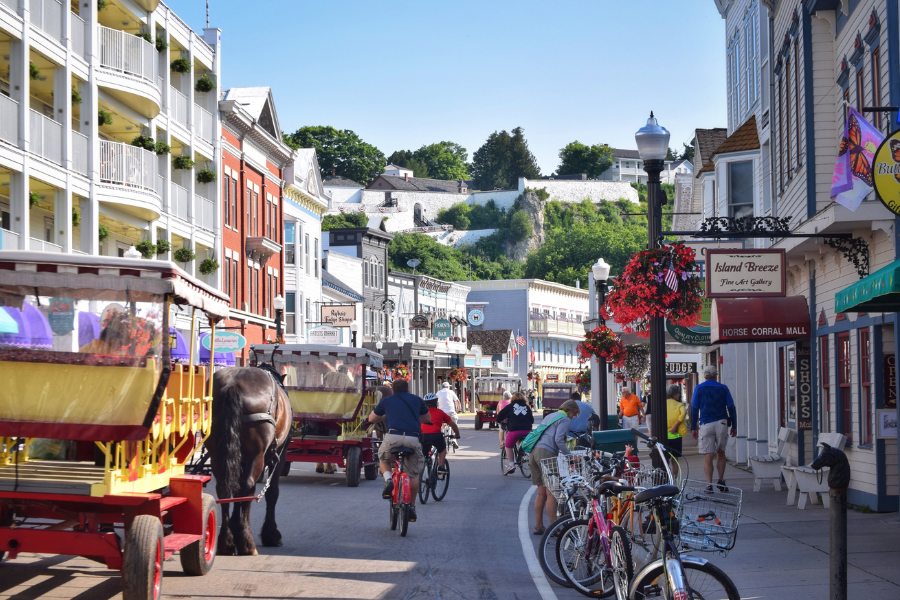
Good news! There are no cars on Mackinac Island—just horses, bikes, and the occasional runaway fudge sample. The air smells like lilacs, saddle leather, and sugar. It’s oddly perfect.
Time seems to slow down here. Victorian inns, cliffside views, and the mighty Mackinac Bridge backdrop make this Lake Huron island a true Midwest escape. Pure Michigan, indeed.
Visit in June for peak lilac season or September to dodge crowds. Pro tip: Rent a bike and circle the island before lunch—eight miles, no stress, no honking.
Oklahoma – Oklahoma City National Memorial
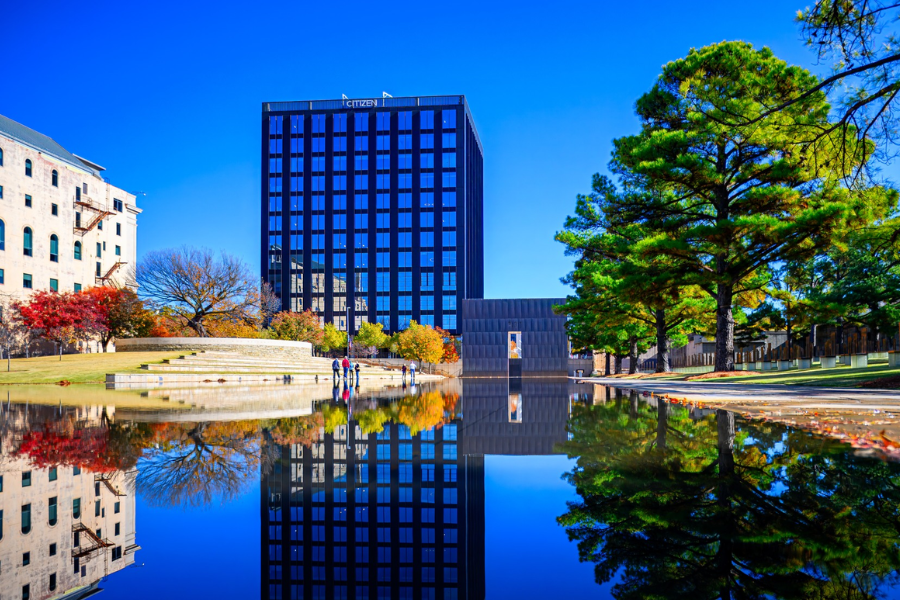
Empty chairs on a grassy field mark where lives were lost in the 1995 bombing. It’s haunting, reverent, and remarkably peaceful—grief softened by design and light.
The memorial honors 168 victims with symbolic elements: a reflecting pool, a Survivor Tree, and twin gates of time. Smithsonian Magazine called it “one of America’s most powerful spaces.”
Go early in the morning for silence and sunrise reflections. The indoor museum next door offers context and tissues. Bring both time and humility; it’s unforgettable.
California – Yosemite National Park
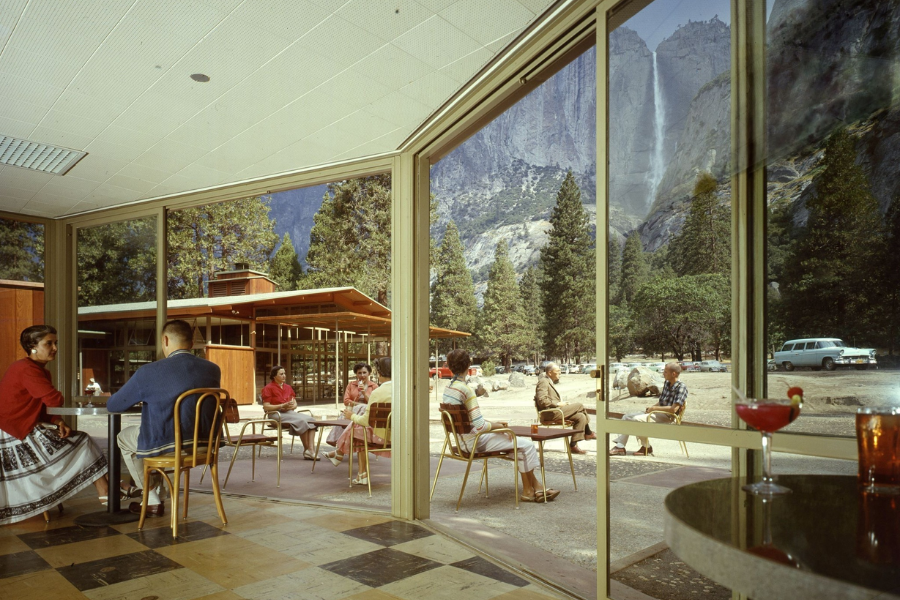
Waterfalls thunder in spring, granite monoliths loom like gods, and black bears occasionally photobomb your hiking pics. Yosemite is the ultimate California flex, boasting 1,200 square miles of awe-inspiring beauty.
Half Dome and El Capitan get all the fame, but Glacier Point at sunset is pure magic. As Backpacker Magazine puts it: “Nowhere else does nature go this hard.”
Parking is tough, especially in summer. Consider the shuttle and arrive before 8 AM. Visit late May or early June—waterfalls rage, wildflowers bloom, and the valley hasn’t yet boiled.
Delaware – Rehoboth Beach Boardwalk
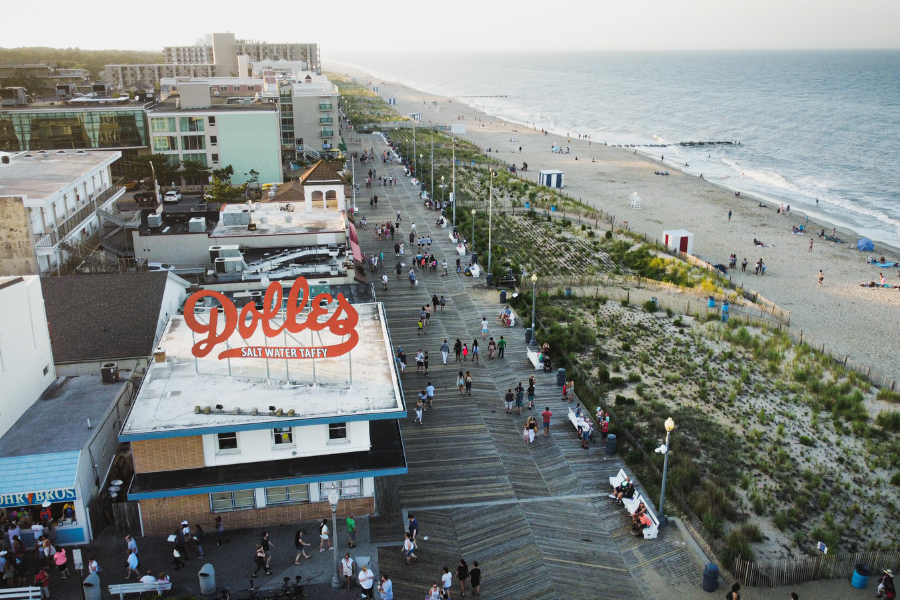
Since 1873, Rehoboth’s boardwalk has charmed beachgoers with fries, arcades, fudge shops, and that classic wooden-plank bounce underfoot. It’s low-key, nostalgic fun you can still smell the salt on.
Locals swear by Thrasher’s Fries (no ketchup allowed) and Dolle’s taffy. According to Travel + Leisure, Rehoboth is “one of the East Coast’s best-kept beach secrets—with rainbow flags flying proud.”
Visit midweek in early June—warm enough for swims, quiet enough to hear waves over carnival clinks. Don’t forget sunscreen; the Atlantic breeze hides how burnt you’re getting.
Kentucky – Mammoth Cave National Park
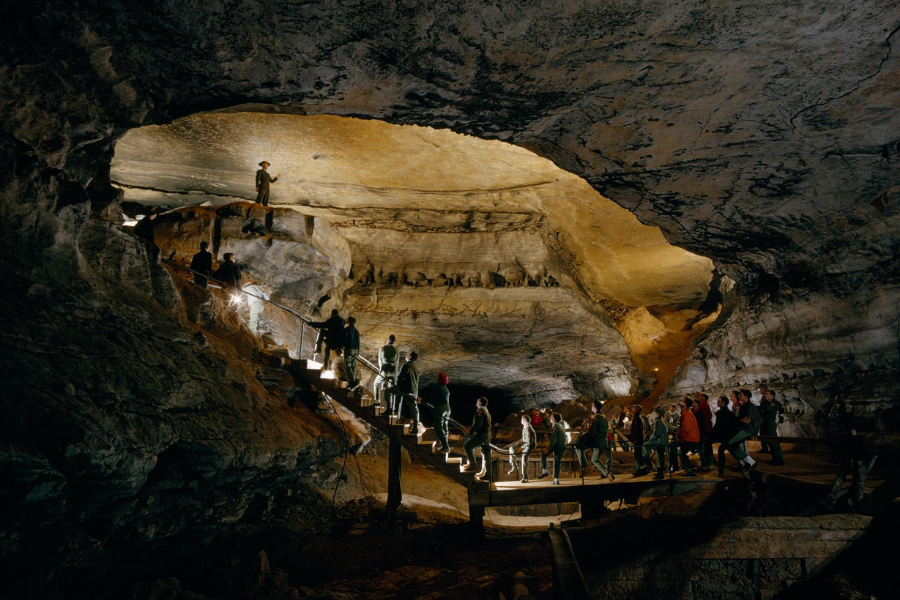
Below rolling hills and horse farms lies the longest cave system on Earth—over 400 miles mapped and counting. It’s massive, mysterious, and surprisingly easy to get lost in (on purpose).
Ranger-led tours bring you into eerily silent cathedral-like chambers, echoing with centuries of stories. “It’s like walking into geology’s secret basement,” says Smithsonian Magazine.
Book tours online weeks in advance—they fill up fast. Summer offers the broadest range of options, but winter tours are less crowded, with dramatic air clarity and no mosquitoes to contend with.
Washington – Pike Place Market

It’s loud, crowded, and smells like coffee and fish—but in a good way. Pike Place is Seattle’s beating heart and its original open-air stage since 1907.
Watch fishmongers toss salmon like rugby balls. Browse indie flower stalls. Pose with the gum wall if you must. “It’s chaotic, but charming,” wrote Fodor’s Travel—and accurate.
Go early to avoid cruise ship crowds and snag the best blooms. Grab a pastry at Piroshky Piroshky and sip your latte while the city slowly wakes.
Missouri – Gateway Arch

Soaring 630 feet above the Mississippi, the Gateway Arch is the tallest monument in the U.S.—and it curves just enough to make your stomach flip from the top.
Built in 1965, it commemorates westward expansion and features a tram ride that feels part elevator, part spaceship. “You feel the climb,” wrote Condé Nast Traveler, “and then the silence.”
Sunset rides deliver golden city views, and winter visits mean no lines. Walk beneath it at night for an otherworldly glow, especially when the fog rolls off the river.
Maine – Acadia National Park
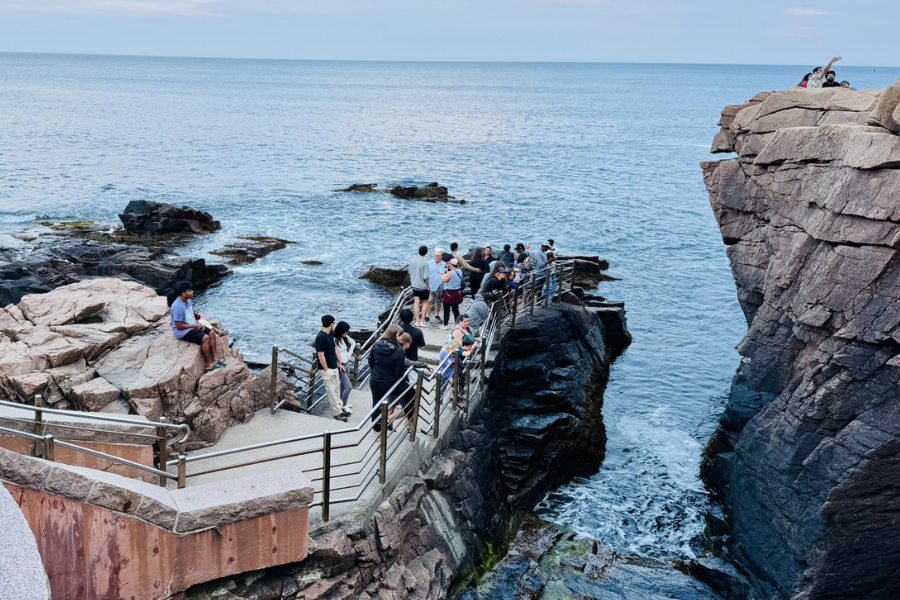
Crashing waves meet pine forests along Acadia’s rugged coastline. Cadillac Mountain offers the first sunrise in the U.S. from October through March, drawing hikers with coffee and goosebumps.
With over 150 miles of trails, carriage roads, and granite peaks, Acadia blends wild adventure with postcard charm. “You get ocean and mountains,” says Yankee Magazine, “within one panoramic glance.”
September is ideal—peak foliage, warm days, and fewer tour buses. Hit Jordan Pond early for clear reflections, popovers at the teahouse, and loons calling across the still water.
Ohio – Rock and Roll Hall of Fame
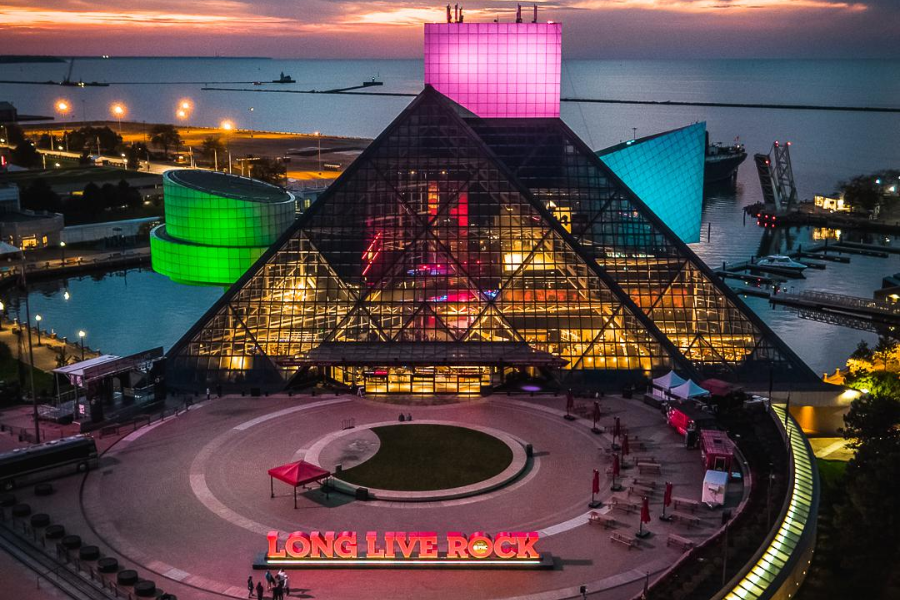
Glass pyramids on Lake Erie house music legends. Elvis’s jumpsuits, Beyoncé’s costumes, handwritten Nirvana lyrics—it’s a museum, yes, but it’s also a shrine to sonic rebellion.
Inductees range from Chuck Berry to Jay-Z. Interactive exhibits let you remix songs, test your vocals, and embarrass your friends. “It’s one giant mixtape come to life,” says Rolling Stone.
Choose midweek to skip lines, and don’t miss the Power of Rock Theater finale—it literally shakes the floor. Friendly advice: wear comfortable shoes and your favorite band tee.
Colorado – Pikes Peak
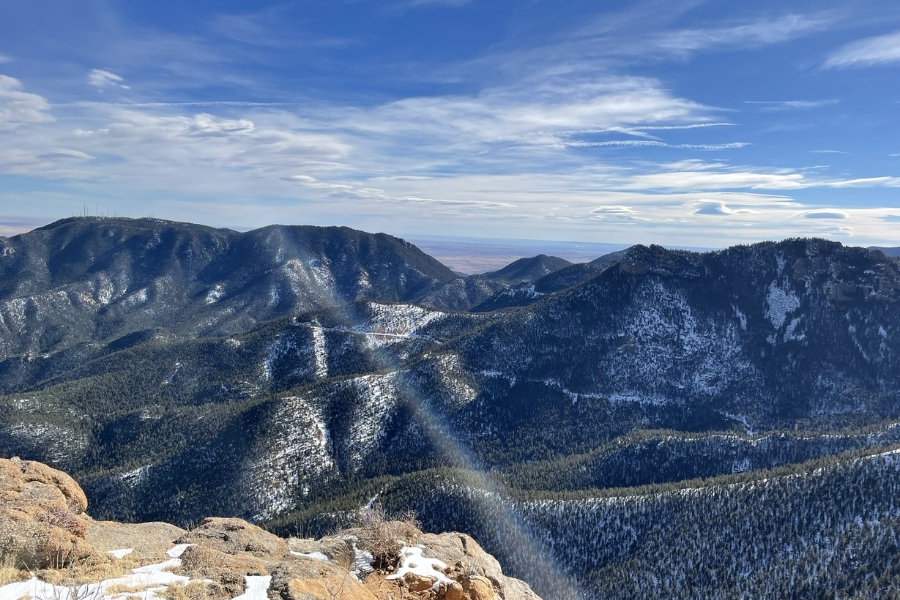
Also referred to as “America’s Mountain,” Pikes Peak inspired the anthem “America the Beautiful.” Whether by car, hike, or cog railway, the summit view makes you feel ten feet tall.
At 14,115 feet, altitude hits fast—so hydrate and take it slow. The new summit visitor center offers donuts made at elevation, which somehow taste better when you’re this close to the sky.
Try sunrise or early fall for thinner air and lighter traffic. According to Visit Colorado Springs, “October mornings deliver golden aspens and peaceful overlooks before snow claims the peak.”
North Carolina – Biltmore Estate

America’s largest privately owned home, Biltmore is a French château dropped into the Blue Ridge Mountains—with 250 rooms, a winery, and acres of carefully planned grandeur.
Built by George Vanderbilt in 1895, it’s not just a mansion—it’s a time capsule. “Visiting Biltmore is like walking through an oil painting,” wrote Architectural Digest.
Come in spring for blooming gardens, or December for jaw-dropping Christmas decor. Don’t skip the rooftop tour—it’s the best way to humble-brag your way into holiday card season.
Nevada – The Strip (Las Vegas)

It’s loud, bright, and 100% unapologetic. The Strip is where you can find pyramids, volcanoes, Eiffel Towers, and light shows. A desert fever dream that somehow works beautifully.
With over 42 million visitors a year, the Strip redefines entertainment. As The Guardian once said, “Nothing real exists here—and that’s the point.”
Shoulder seasons (March-May, Sept-Nov) offer perfect weather and lower rates. Skip taxis! Use the free trams between major resorts and explore on foot before the sun melts your resolve.
Rhode Island – Cliff Walk
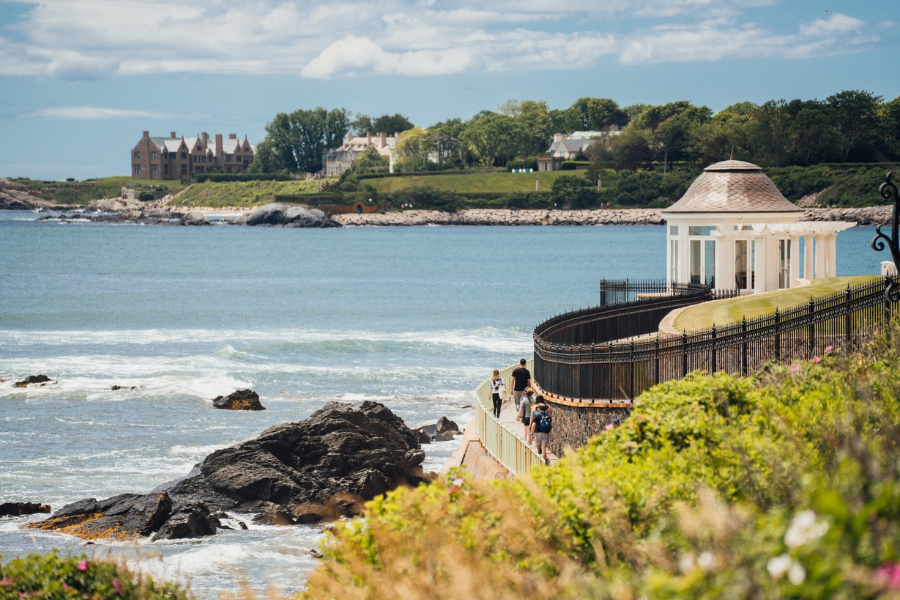
Where manicured mansions meet wild Atlantic waves, Cliff Walk winds 3.5 miles along the rocky coastline with views of Gilded Age estates and ocean spray that occasionally slaps you awake.
Built in the 1800s, it still charms with contrasts—rose gardens one minute, jagged cliffs the next. The Boston Globe calls it “New England’s most photogenic footpath.”
Planning to visit? You have to wear real shoes, not flip-flops. Do it early in summer for hydrangeas and sea breeze before crowds arrive. Watch your step—the trail gets spicy in the middle stretch.
Alaska – Denali National Park

Denali rises like a white giant from the horizon, towering 20,310 feet above six million acres of wilderness. You might see grizzlies, moose, and caribou—all before breakfast.
Tourists come for the wildlife, but stay for the hush. No cell signal and no billboards here. All you have is the wind, tundra, and the occasional marmot. The silence is profound, but not eerie.
Book the bus tour early and don’t forget to bring binoculars! Summer has longer days and more moose sightings. Autumn is quieter, and Denali glows red and gold like something out of a storybook.
Georgia – Georgia Aquarium

Home to whale sharks, sea otters, and beluga whales, Georgia Aquarium is one of the largest in the world. It’s like diving into the ocean without getting wet.
Walk through the glass tunnel of Ocean Voyager as manta rays soar overhead. “It’s a surreal, immersive experience,” National Geographic wrote—and the penguins agree with every waddle.
Go first thing in the morning to catch animals at their liveliest. Weekdays in late January or September mean less crowding, cheaper tickets, and more uninterrupted fish-gazing.
Illinois – Millennium Park

At the heart of downtown Chicago, Millennium Park offers 25 acres of city serenity. Joggers, art lovers, and selfie-seekers converge under steel trees and sky-high fountains.
The Cloud Gate sculpture—aka “The Bean”—reflects Chicago’s skyline in mesmerizing curves. “It’s a tourist cliché, yes,” Chicago Tribune admits, “but still hypnotically irresistible.”
Try visiting on a weekday morning to beat the wedding shoots and crowds. In winter, the nearby ice rink turns this public space into a snow-globe-worthy scene.
Vermont – Ben & Jerry’s Factory Tour

It starts with the smell of waffle cones and ends in a euphoric brain freeze. This working factory turns cream into quirky gold—Chunky Monkey, anyone?
The tour includes a short film, a behind-the-scenes peek at the production line, and a visit to the “Flavor Graveyard.” Food & Wine says it’s “a pilgrimage and sugar rush in one place.”
If you want to skip peak summer lines, visit in September and enjoy Vermont’s early fall air. But never ever skip the exclusive test kitchen flavor—some never make it to shelves, but should.
Idaho – Shoshone Falls (Twin Falls)

They call it the “Niagara of the West,” and for good reason—it’s actually taller than Niagara, plunging 212 feet with a thunderous spray that turns mist into rainbows.
Spring snowmelt is peak season, when water roars and crowds gather at overlook platforms. The Idaho Statesman says, “Locals bring lunch just to watch the river flex.”
Arrive early to grab shaded parking, especially in April or May. For the best photos, aim for mid-morning when the light hits just right across the Snake River canyon.
New York – Central Park
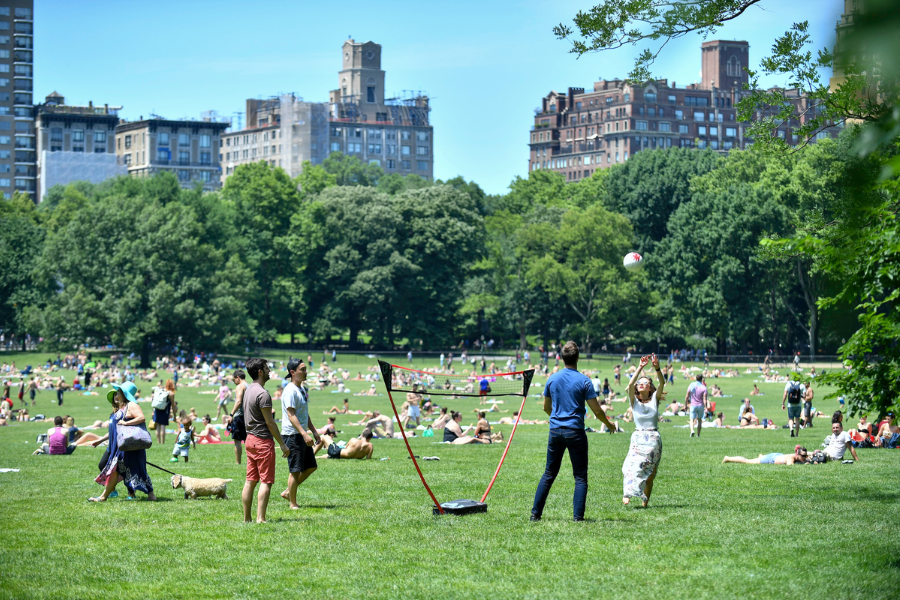
843 acres of ponds, trails, and picnic spots in the middle of skyscraper city—Central Park is New York’s collective backyard and the home of every 90s rom-com!
From Strawberry Fields to Bow Bridge, the park blends romance, recreation, and the occasional spontaneous sax solo. Time Out NY calls it “the most democratic place in Manhattan.”
Visit early on a weekday for a quiet lakeside experience and golden light. Spring blooms and fall foliage both turn this green space into a photographer’s playground. Dogs? Optional, but heavily recommended.
Indiana – Indianapolis Motor Speedway

Built in 1909, this speedway is racing’s Mecca. It’s the largest sports venue in the world—more seats than Yankee Stadium, the Super Bowl, and Coachella combined.
The Indy 500 draws over 300,000 fans each Memorial Day weekend. “It’s not just a race, it’s Indiana’s Super Bowl, Mardi Gras, and July Fourth rolled into one,” says USA Today.
Tour the museum inside and take a lap if the track’s open. Weekday mornings in April offer cool weather, lower entry fees, and plenty of vroom without the crowds.
Louisiana – French Quarter

Music seeps from open windows. Iron balconies overflow with flowers. Street performers juggle, play jazz, and flirt with tourists. The French Quarter is alive in every possible sense of the word.
Founded in 1718, it’s the oldest neighborhood in New Orleans, pulsing with haunted lore, spicy gumbo, and saxophone solos at every corner. Lonely Planet calls it “pure sensory overload.”
Visit midweek in March for festive vibes without the Mardi Gras madness. Don’t skip the beignets at Café du Monde—but pack wipes, powdered sugar gets everywhere.
Utah – Zion National Park

Massive red cliffs rise like cathedral walls. Zion grabs you by the eyeballs and doesn’t let go—especially if you’re climbing Angel’s Landing or hiking The Narrows through the river.
Its slot canyons, emerald pools, and towering monoliths attract nearly five million visitors yearly. “Zion is geological drama in motion,” wrote Outside Magazine, and they weren’t exaggerating.
Permits are now required for Angel’s Landing, so book early. April and October are best for hiking weather—cool mornings, dry trails, and fewer crowds gasping beside you.
Arkansas – Hot Springs National Park
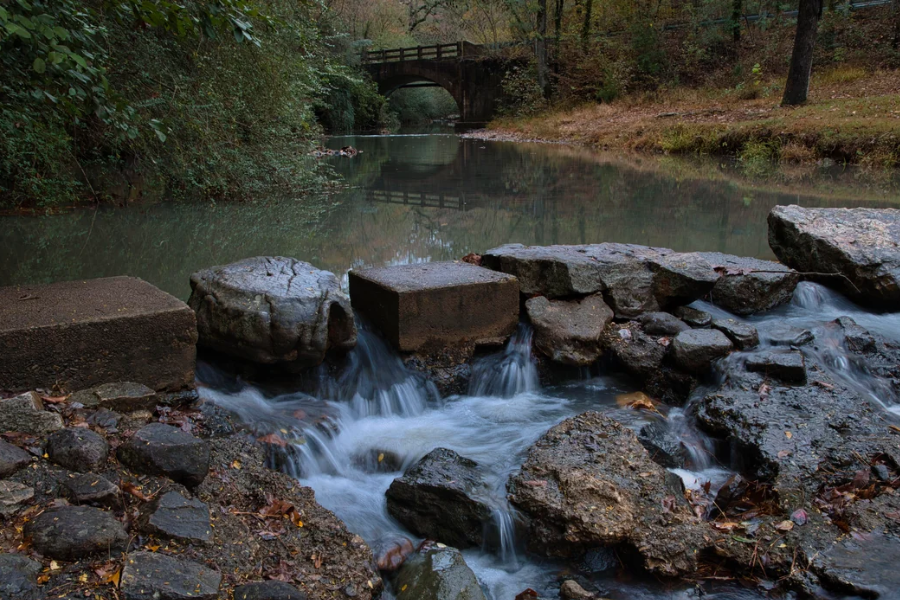
Nicknamed “The American Spa,” this historic park features naturally heated thermal springs that once lured gangsters, baseball players, and bathrobe-clad elites into steamy relaxation. Yes, it’s that Hot Springs.
Stroll Bathhouse Row and explore ornate buildings like Fordyce Bathhouse, now a museum. According to National Geographic, it’s “where wellness met architecture in its marble-walled heyday.”
Bring a refillable bottle—there are public fountains dispensing natural hot spring water (and yes, locals swear by it). Fall offers cooler walking weather and fewer selfie sticks.
Florida – Walt Disney World

This isn’t just a theme park—it’s 43 square miles of castles, fireworks, and nostalgia-fueled magic. Yes, it’s crowded. Yes, it’s expensive. And yes, it’s 100% worth it.
From EPCOT’s global eats to Animal Kingdom’s safari, every inch of Disney is engineered delight. “Disney is a perfect getaway for parents — without the kids,” says The Washington Post‘s travel columnist.
Buy Genie+ if you want your sanity. October is gold: fewer lines, perfect temps, and Halloween nights that Mickey himself would haunt. Hydrate—it’s Florida, not Fantasyland weather.
New Jersey – Atlantic City Boardwalk
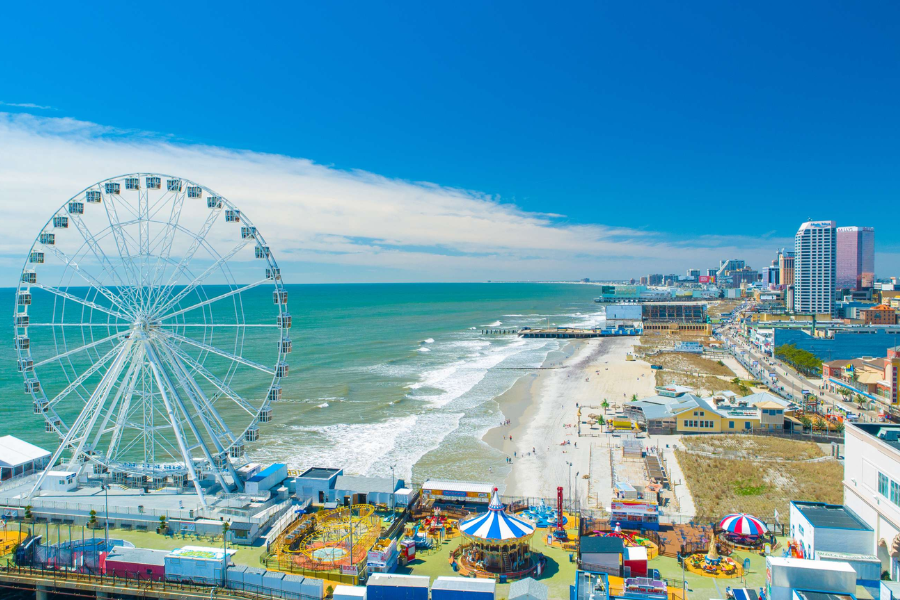
Neon lights, old-time carnival games, and the smell of caramel corn mix with crashing waves. Atlantic City’s boardwalk is a place where retro never quite left.
Built in 1870, it’s the oldest boardwalk in the U.S. “It’s kitsch, it’s loud, it’s perfect,” says The New York Times. Miss America once walked this planked runway.
Visit midweek in September—warm seas, thinner crowds, and summer energy still lingering. Grab a steel pier funnel cake and watch seagulls try to steal it. They’re relentless.
Oregon – Crater Lake National Park

A collapsed volcano filled with the deepest blue water you’ve ever seen—Crater Lake is nature’s finest trick, 1,949 feet deep and astonishingly clear.
Formed nearly 8,000 years ago, it’s one of the cleanest lakes in the world. “It looks fake from every angle,” wrote Backpacker Magazine. But it’s absolutely real.
July to early September offers the best visibility. Drive Rim Road for views and vertigo. Watch for pika squeaks and catch sunrise from Watchman Peak—it’s unreal and usually uncrowded.
South Carolina – Historic Charleston
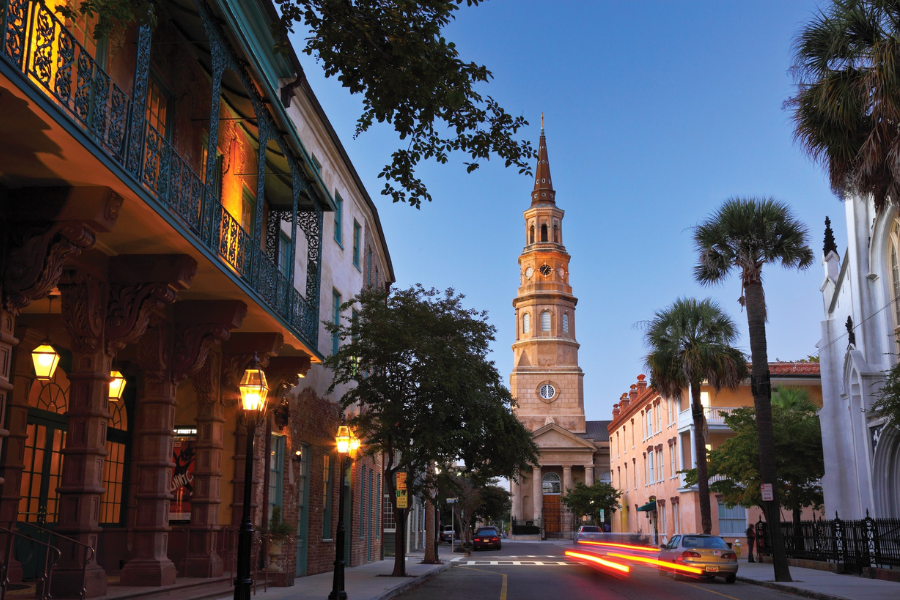
Cobblestone streets, pastel mansions, and horse-drawn carriages make Charleston feel frozen in time. But its food, art, and Southern warmth keep it buzzing with modern charm.
Rainbow Row and the Battery are musts, but locals swear by wandering aimlessly. “Charleston rewards the curious,” says Condé Nast Traveler. They’re right—some of the best stuff isn’t mapped.
April and October are sweet spots—blooming flowers, porch weather, and oyster roasts. Book a walking tour to catch the city’s best stories (and avoid walking into wedding photo shoots).
Iowa – Field of Dreams Movie Site

Yes, it’s the actual baseball field from the 1989 movie. Yes, you can walk the corn rows. And yes, it still feels like magic after all these years.
Built on a real farm, this field hasn’t changed much. “People cry here more than at weddings,” the site manager once joked to the Des Moines Register—and they’re not wrong.
Go in late summer when corn is tall and the sun hits golden. Bring a glove—spontaneous games happen, and ghost players do make seasonal appearances.
Massachusetts – Freedom Trail
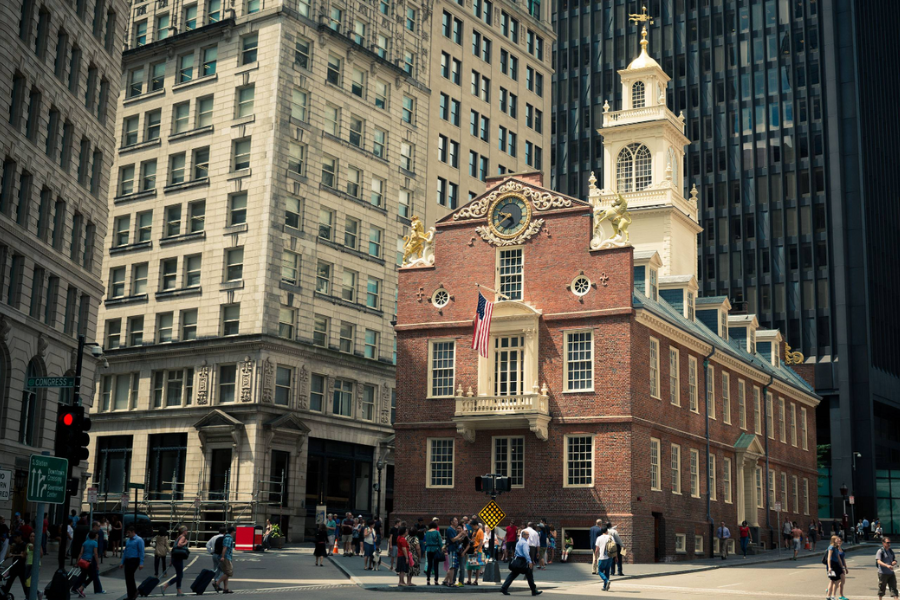
Boston’s red-brick trail connects 16 historic sites in just 2.5 miles. It’s part walk, part history lesson, part excuse to buy clam chowder before noon without guilt.
You’ll pass Paul Revere’s house, Boston Common, and the site of the Boston Massacre. As National Geographic notes, “It’s American history you can literally walk through.”
Remember to wear comfy shoes and take the guided tour for great Revolutionary-era gossip. Spring weekends mean street performers, less snow, and Fenway buzz if you’re near the North End.
Arizona – Grand Canyon National Park

You’ve seen it on postcards, calendars, and desktop wallpapers—but nothing prepares you for the first glimpse. It’s not a view; it’s a vertigo-inducing masterpiece in red and gold.
This 277-mile chasm carved by the Colorado River attracts nearly 5 million visitors a year. It’s an official Wonder of the Natural World and a rite of passage for travelers.
Hike South Kaibab Trail at dawn to beat the crowds and heat. Or just stare from Mather Point with a coffee and let your existential crisis gently wash over you.
North Dakota – Theodore Roosevelt National Park
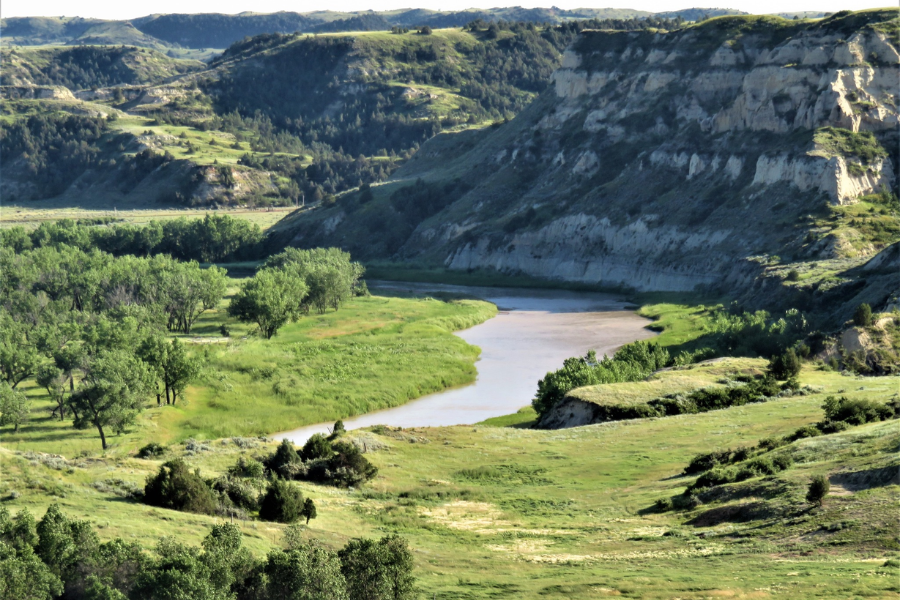
Here, you’ll see wild horses roam rolling hills. Bison nap in the shade of striped canyons. This park feels like a secret—one even some locals forget is hiding in plain sight.
Named for the conservation president who once ranched here, the park blends quiet solitude with untamed wildlife. Outside Magazine calls it “Yellowstone without the crowds, but with more charm.”
Visit in early June for green hills and fewer bugs. Drive the Scenic Loop early—bison love blocking roads, and you’ll want time for a good stare-down.
Wyoming – Yellowstone National Park

It steams, it erupts, it smells like rotten eggs—and it’s glorious. Yellowstone is wild America at full volume, with geysers, bison, and bubbling pools that dare you to look closer.
Home to Old Faithful and more geothermal features than anywhere else on Earth, it’s a wonderland of heat, teeth, and color. National Park Service calls it “nature’s science fair.”
Late May or September means elk bugles and fewer tour buses. Stay alert—bison roam everywhere, and they don’t care about your selfie stick or rental car bumper.
West Virginia – New River Gorge Bridge

This steel arch spans a yawning canyon and drops your jaw. It’s America’s third-highest bridge, and from certain angles, seems to float between clouds and forest.
Built in 1977, it cut a 45-minute drive down to 45 seconds. Every October, Bridge Day lets daredevils BASE jump legally. Travel + Leisure calls it “a hidden gem.”
Good time to visit is in the fall for flame-colored trees and chilly mist. Walk the Canyon Rim Boardwalk for views, or try the Bridge Walk tour beneath the span—yes, it’s a little terrifying.
Texas – San Antonio River Walk

Stone paths, canal boats, mariachi music, and margaritas—this downtown oasis will give you Venice, add the fiesta, and 100% Texan charm. Even locals never get tired of walking it.
Originally a flood control project, it has now become a vibrant loop lined with shops, restaurants, and palm trees. Texas Monthly calls it “the state’s most romantic sidewalk.”
Go midweek in March or November for perfect strolling temps. Ride the boat tour at twilight—the twinkle lights turn every bridge into a soft-focus postcard.
Nebraska – Henry Doorly Zoo
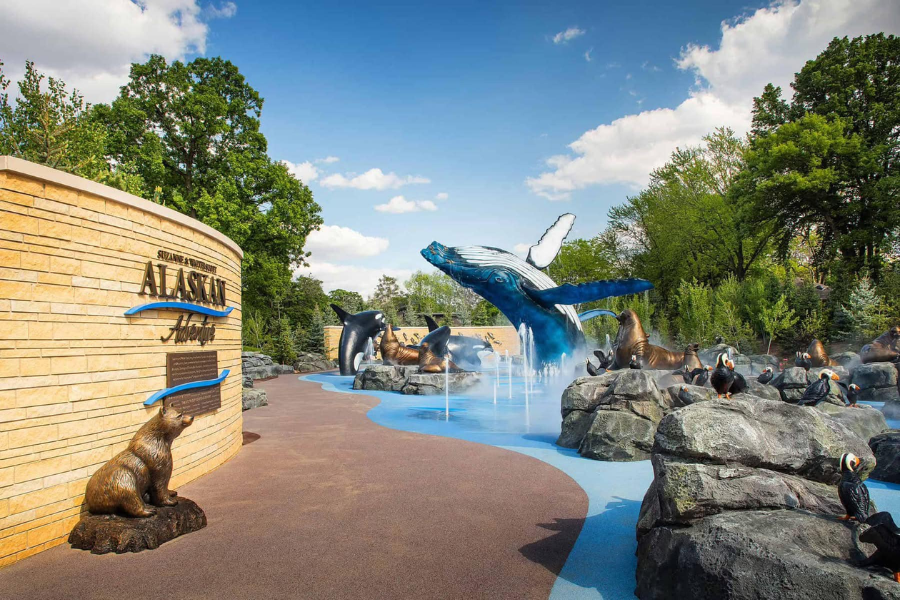
Don’t scoff—it’s not just a zoo. It’s a biome-smashing, dome-dwelling wildlife wonderland with a rainforest, desert, aquarium, and underground cave all inside Nebraska. Yeah, Nebraska.
The Desert Dome is the world’s largest indoor desert. The Lied Jungle? Feels like Costa Rica. USA Today named it the best zoo in the country—and kids agree loudly.
Visit on a weekday morning in spring or fall for animal activity and lighter lines. Bonus: There’s a skyfari chairlift over giraffes and rhinos. You’re welcome.
Mississippi – Vicksburg National Military Park

Set atop bluffs overlooking the Mississippi River, this park honors the pivotal Civil War siege that split the Confederacy. Cannons still line the hills where soldiers once stood.
The 16-mile driving loop winds past trenches, memorials, and the restored USS Cairo gunboat, sunken in 1862 and now on display. Smithsonian calls it “an outdoor classroom with heavy echoes.”
Visit in late March or early November when temps are mild and trees are glowing. Stop at the Illinois Memorial and test its eerie acoustics under the dome.
Connecticut – Mystic Seaport Museum

This waterfront gem will make you feel confused. Is it a museum or a time machine? Historic ships creak at the dock, costumed interpreters mend sails, and sea shanties drift through salty coastal air.
The Charles W. Morgan, America’s last surviving wooden whaling ship, steals the show. “It’s the Smithsonian of maritime heritage,” notes Yankee Magazine, and it’s easy to lose hours on deck.
Fall weekdays are the calmest. Pair your visit with Mystic Pizza (yes, that one) and grab a harbor-view bench for a lobster roll as schooners glide past like it’s 1870.
Alabama – U.S. Space & Rocket Center

Home to the world’s largest collection of space artifacts, this center lets you stand beneath a Saturn V rocket and simulate astronaut training. It’s NASA-level cool without leaving Earth.
Over 16 million visitors have walked these halls, marveling at Apollo engines and moon rocks. According to Smithsonian Magazine, it’s “a pilgrimage site for space buffs and curious kids.”
Try the G-Force Accelerator if you dare, or chill in the planetarium. Visit in spring for thinner crowds and catch Rocket Park glowing golden at sunset—it’s surprisingly romantic.
Pennsylvania – Liberty Bell & Independence Hall
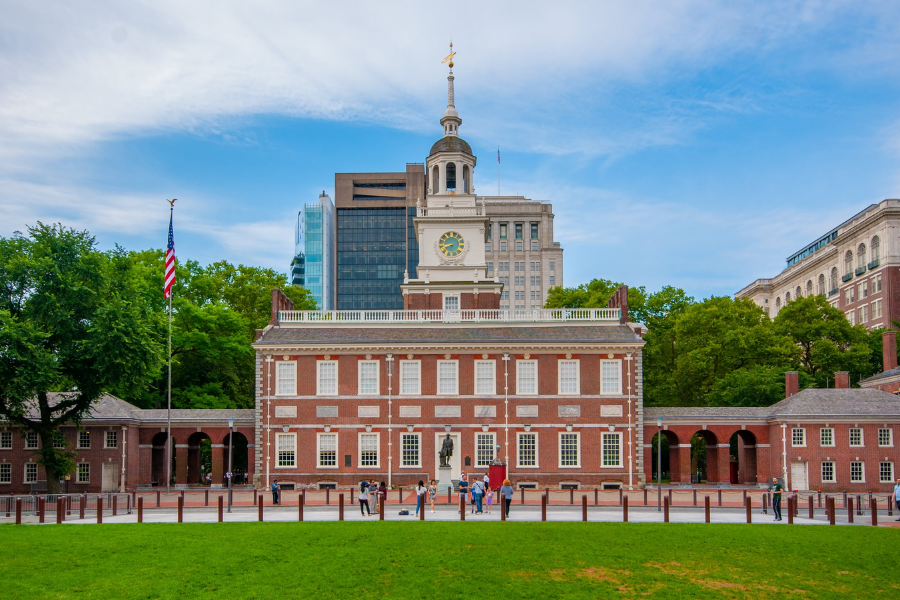
The bell doesn’t ring, but it resonates. Nearby, Independence Hall saw Jefferson, Franklin, and Hamilton draft ideas that would echo for centuries. It’s hallowed ground with a cheesesteak stand nearby.
The cracked icon draws two million visitors a year. Smithsonian calls it “America’s most visited relic of rebellion”—and you can see why when sunlight hits the bronze just right.
Fall weekdays are believed to be the best—school groups are gone, and the cobblestones are leaf-dappled. Don’t miss the ranger tour; it’s short, sharp, and surprisingly funny in a Ben Franklin kind of way.
Montana – Glacier National Park
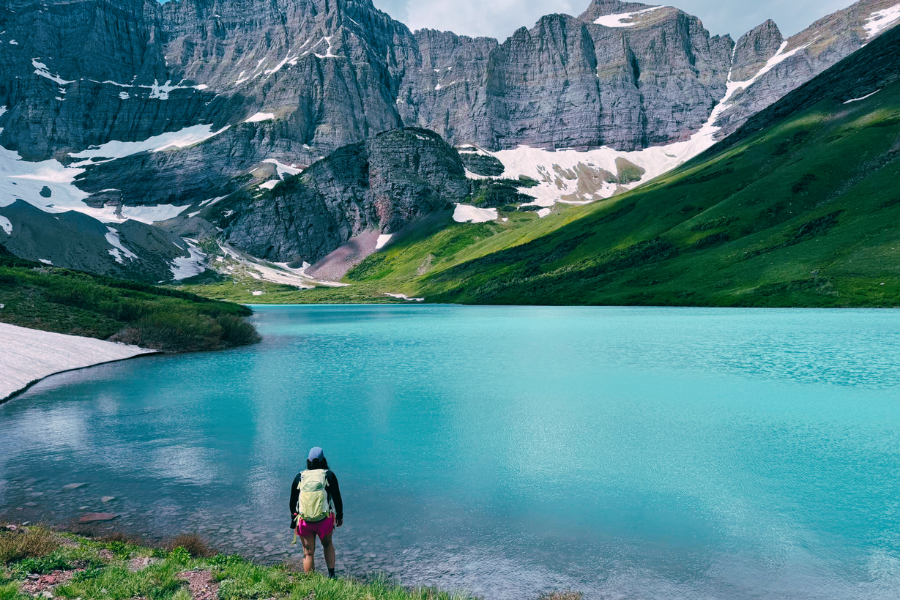
Glacier’s jagged peaks and mirrored lakes feel untouched, like the world forgot to modernize this corner. It’s America’s Switzerland—minus the fondue, but with more moose.
Going-to-the-Sun Road, a 50-mile masterpiece of cliff-hugging switchbacks, is both scenic thrill ride and Instagram magnet. National Parks Traveler calls it “America’s most astonishing drive, full stop.”
Go mid-July for wildflowers and full road access. Hike Avalanche Lake early—it’s cool, shaded, and echoes with distant waterfalls that sound like distant applause.
Wisconsin – Wisconsin Dells

Slides, screams, and soggy flip-flops—welcome to the “Waterpark Capital of the World.” It’s where childhood memories are made, and adulthood gets surprisingly competitive on the tube racer.
Over 20 indoor and outdoor parks keep it splashy year-round. “Wisconsin Dells is equal parts chaos and cannonballs,” wrote Midwest Living. There’s also a scenic side: sandstone bluffs and boat tours.
Late August might be the best for you—temps still sizzle, but crowds start to thin. Pack backup swimsuits, waterproof sandals, and patience for lazy river traffic jams. Embrace the wet.
Tennessee – Great Smoky Mountains National Park

Misty ridges roll like waves across the horizon. It’s dreamy at dawn, drippy by afternoon, and home to more black bears than people in some zip codes.
With over 14 million visitors annually, it’s America’s most visited national park. “It’s Southern Appalachia wrapped in fog and fiddle tunes,” says Smoky Mountain Living magazine.
Fall is stunning, but late spring offers fewer crowds and glowing rhododendrons. Find Cades Cove at sunrise—deer, turkeys, and history loop together in the early golden haze.
New Hampshire – Mount Washington Cog Railway
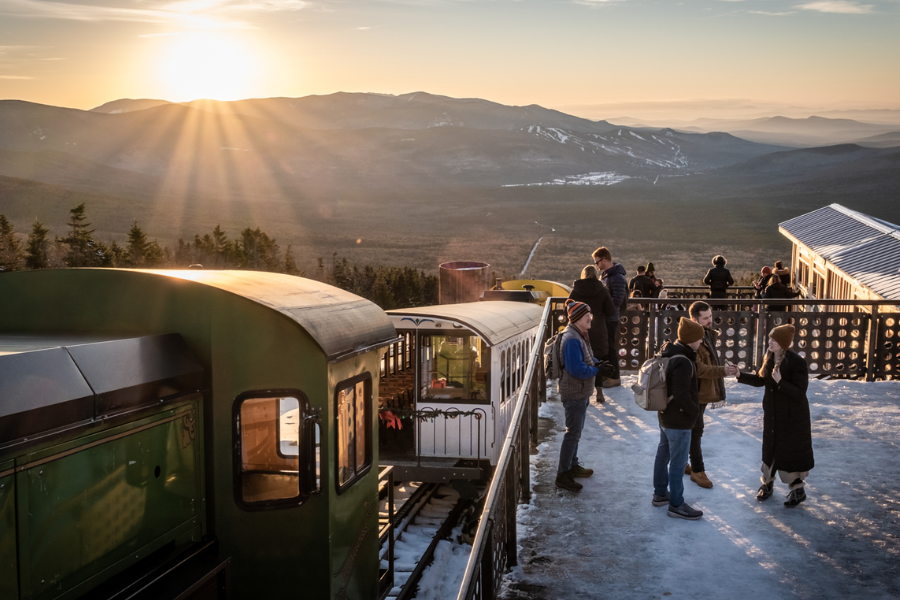
America’s first mountain-climbing train chugs up 6,288-foot Mount Washington like it’s still 1869. Steam, soot, and steep grades combine for one quirky, memorable ascent through the clouds.
The summit weather is famously wild, once clocked at 231 mph wind. “If it’s nice up here, wait five minutes,” locals joke. They’re not wrong.
Book early fall seats for peak foliage and crisp air. Bring a jacket—even in July, it gets frigid up top. Oh, and wave to hikers—you’re gliding while they’re sweating.
Maryland – National Aquarium
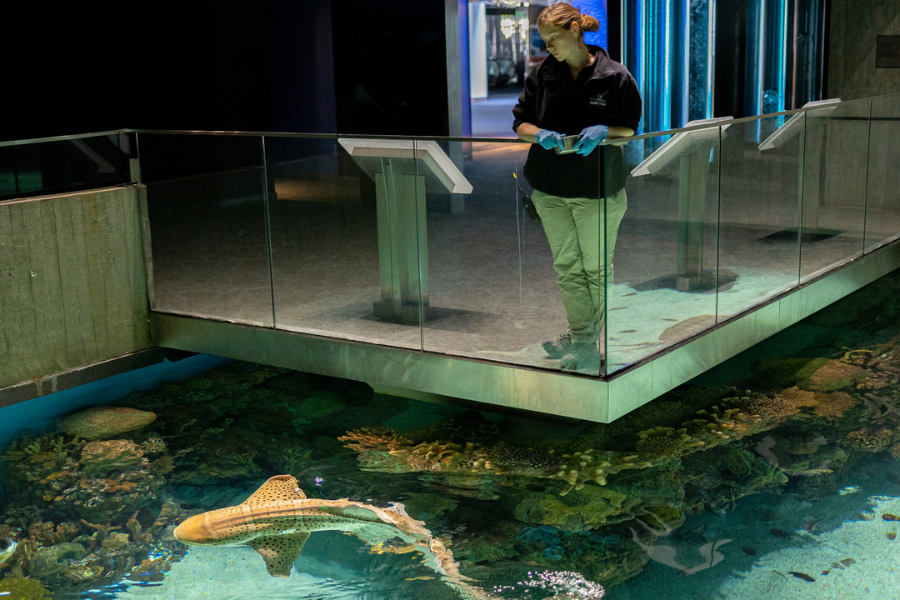
Sharks swim past your nose. Dolphins leap mid-splash. And a rainforest grows inside a glass pyramid. Baltimore’s National Aquarium is immersive, dramatic, and wonderfully air-conditioned.
Home to 20,000+ animals, it’s consistently ranked among the best aquariums in the U.S. Travel Channel called it “an aquatic blockbuster with conservation cred to match.”
Go early or late to avoid school groups. Fridays after 5 p.m. offer discounted admission and moody lighting—perfect for date night with jellyfish and glowing sea creatures.
Kansas – Monument Rocks
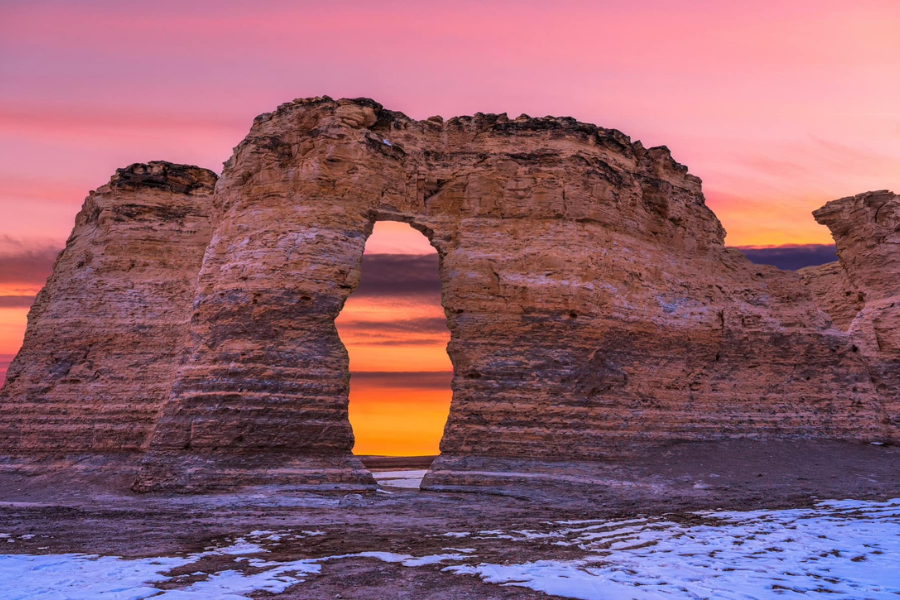
Out in western Kansas, giant chalk formations—some over 70 feet tall—rise unexpectedly from the flat prairie. It’s like finding Stonehenge in the middle of a wheat field.
Known as the “Chalk Pyramids,” these eerie monoliths were once at the bottom of a prehistoric sea. Fossils still hide in the rocks if you know where to look.
Late afternoon is prime time for golden hour photos. There’s no entrance fee, but bring your own water—and avoid muddy days, unless you enjoy clay-colored shoes forever.
